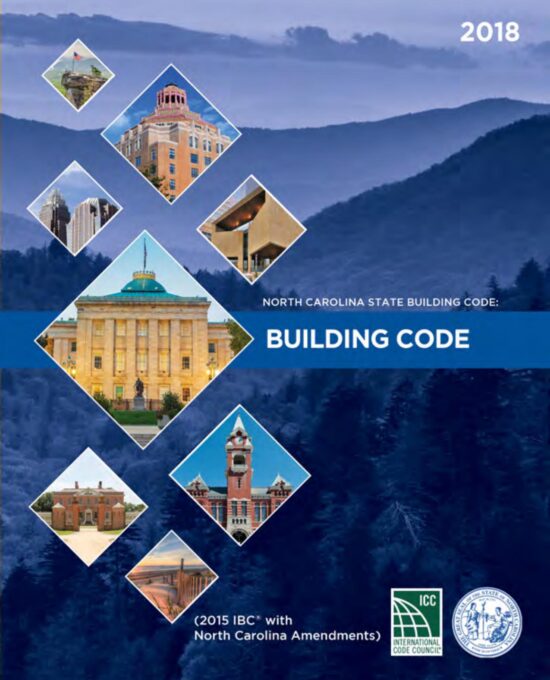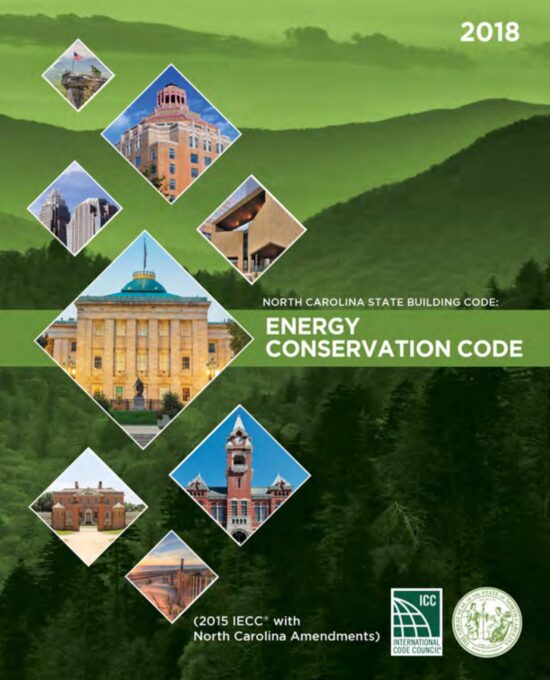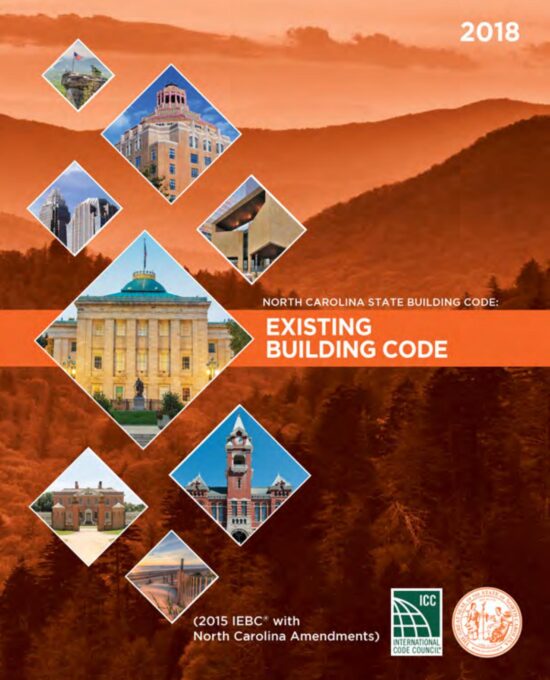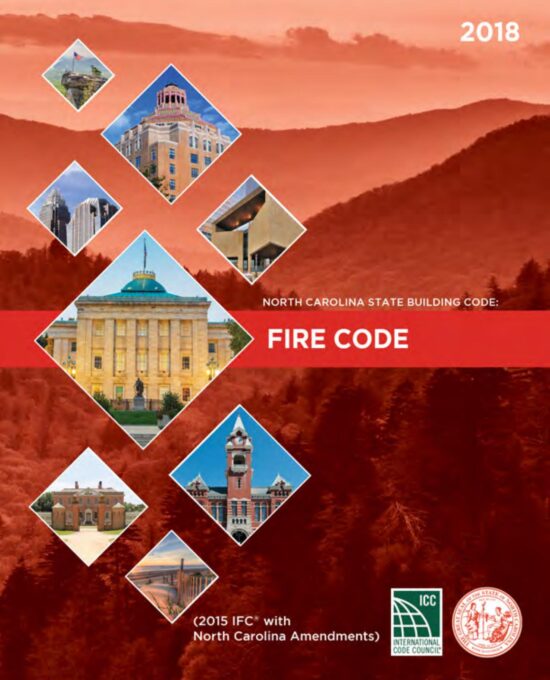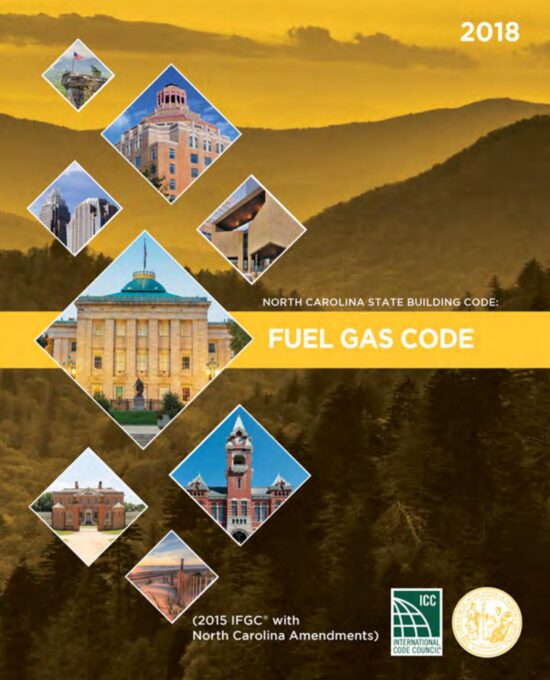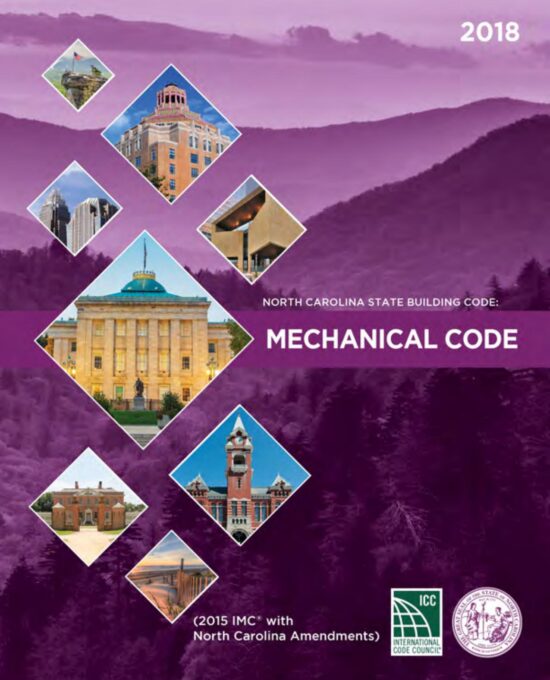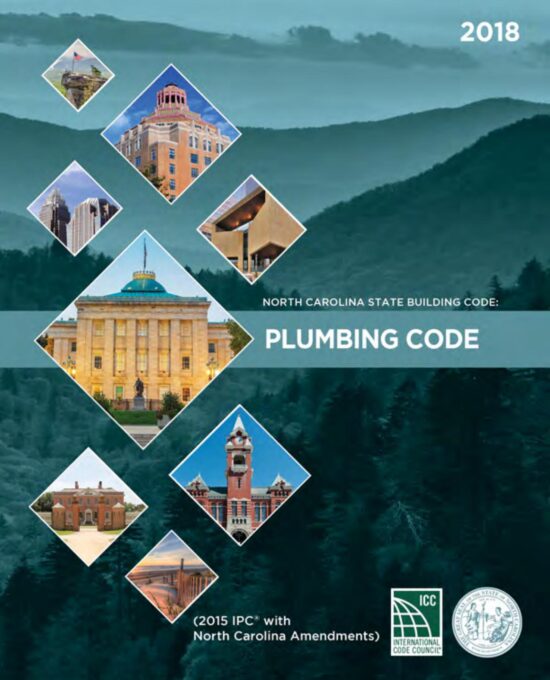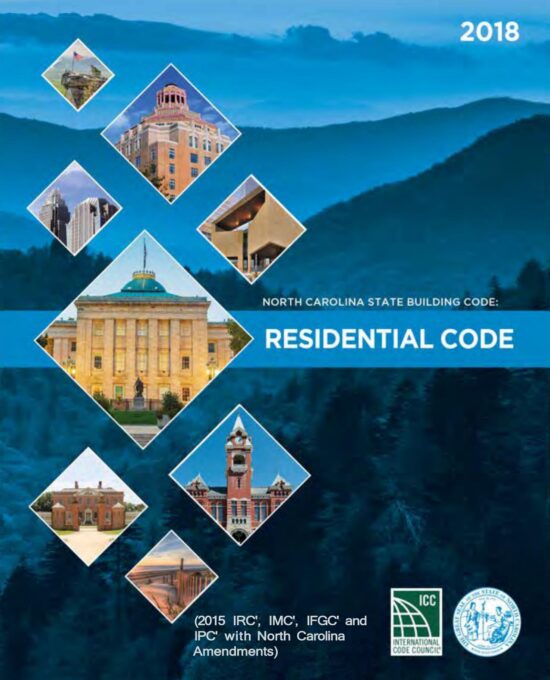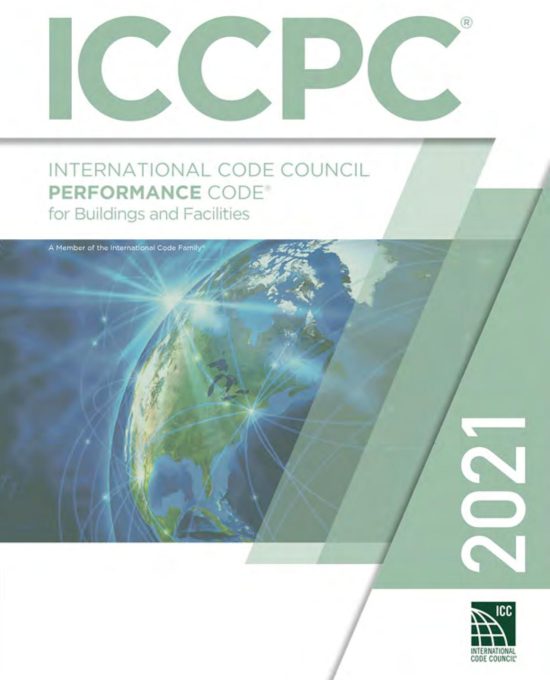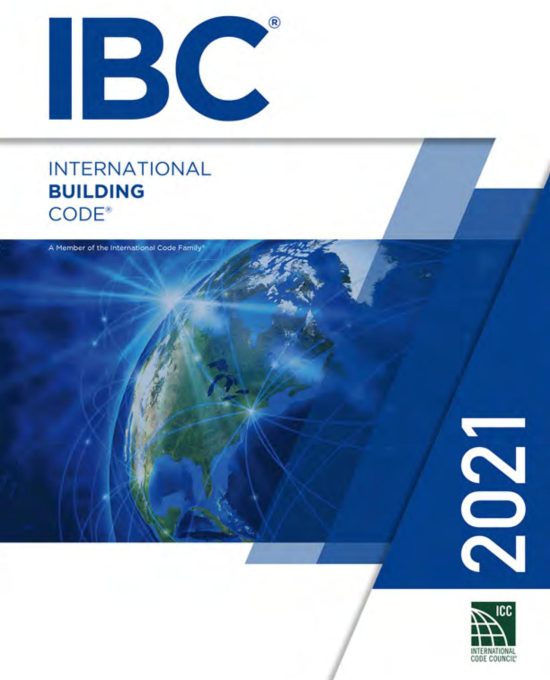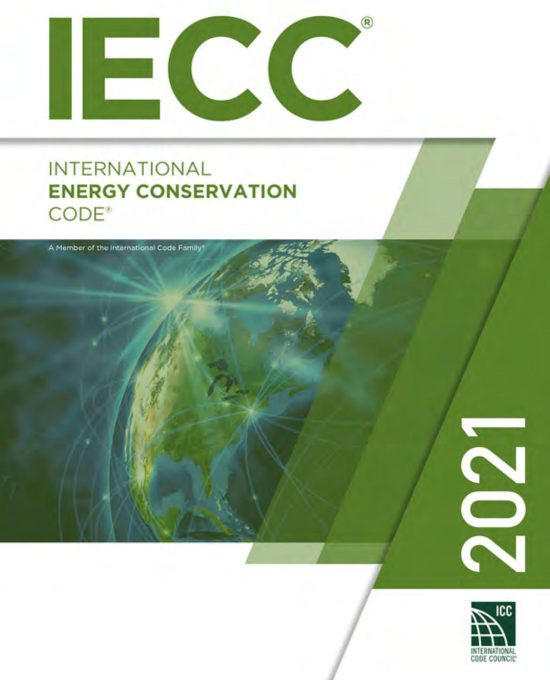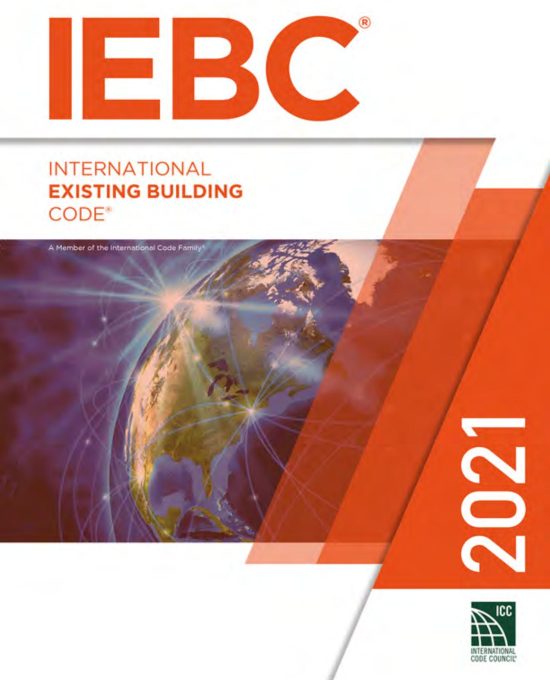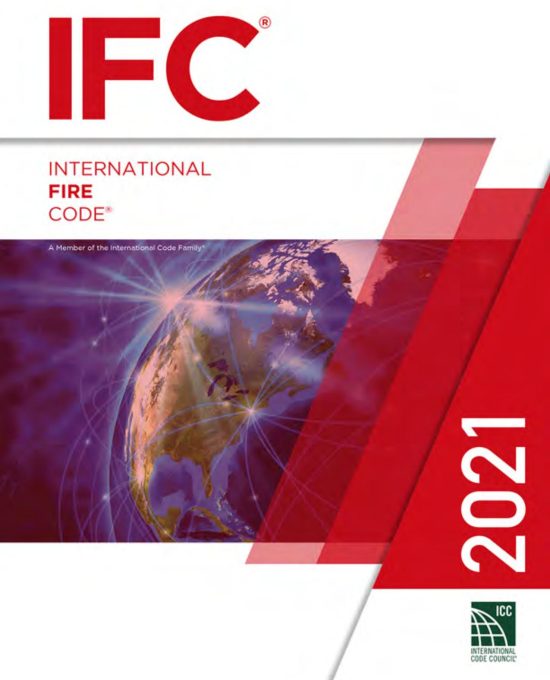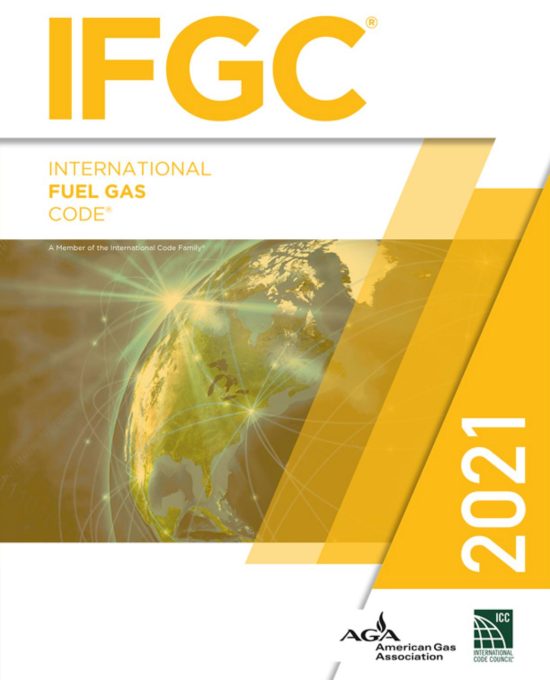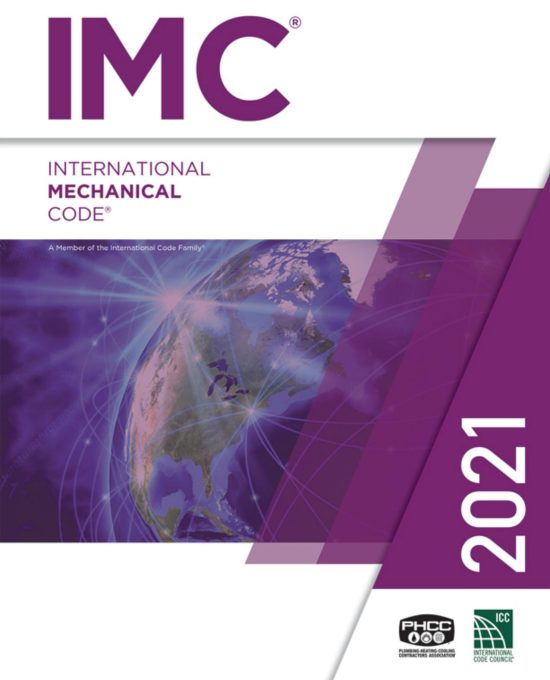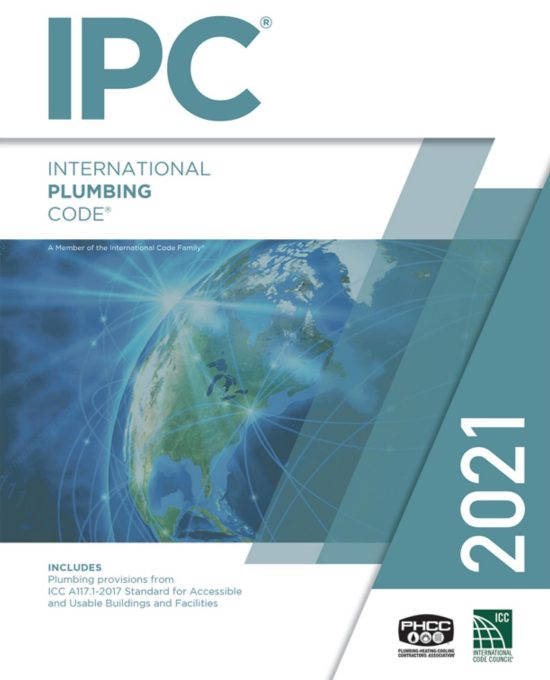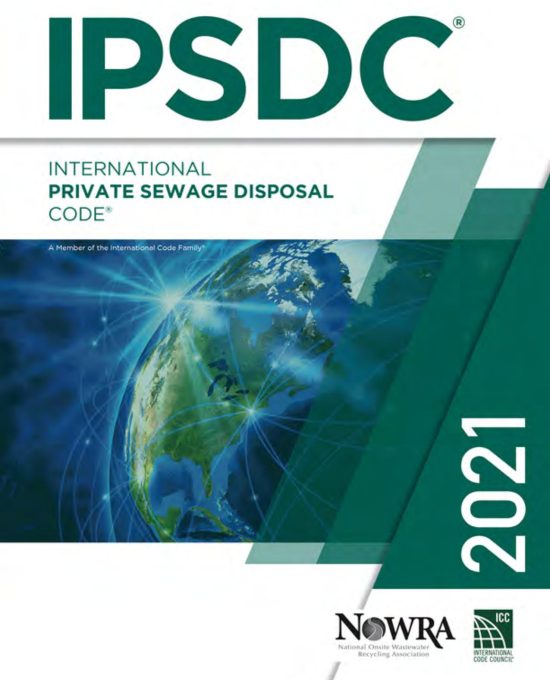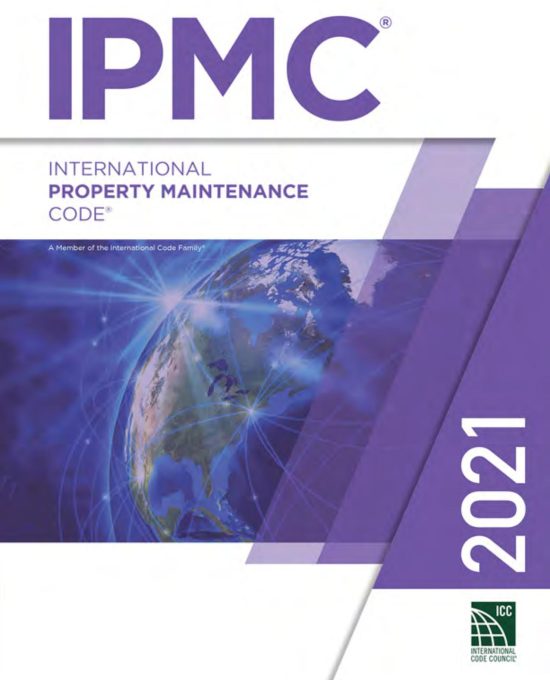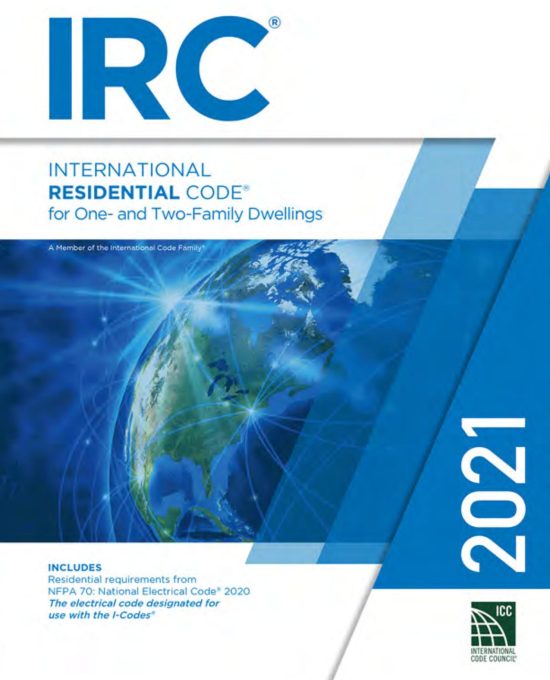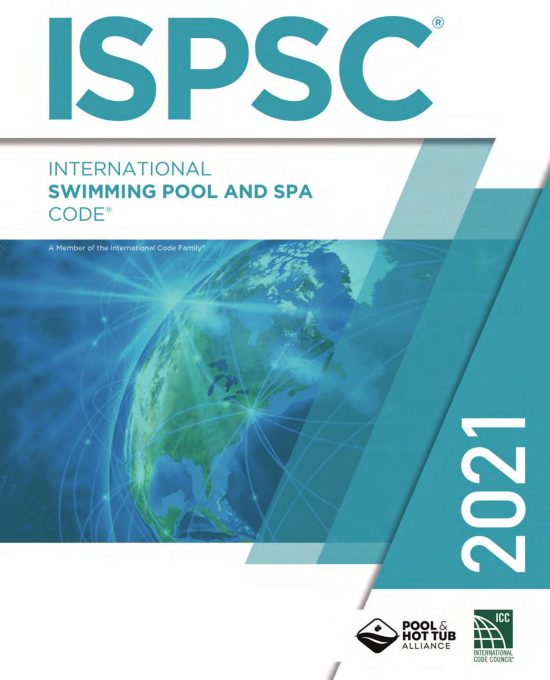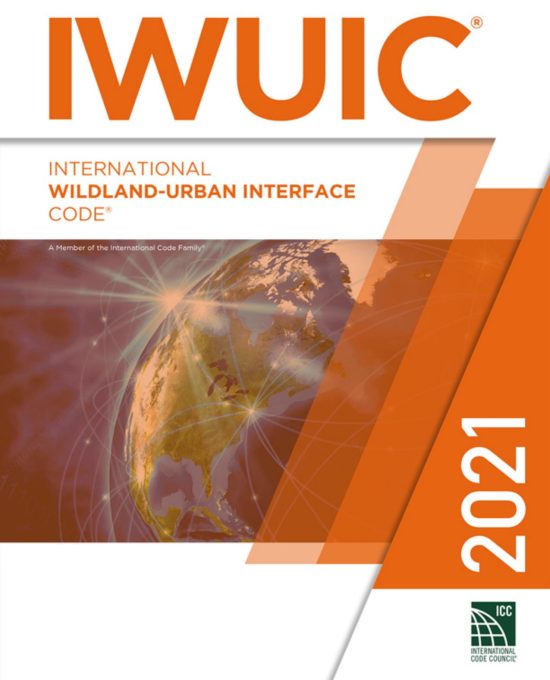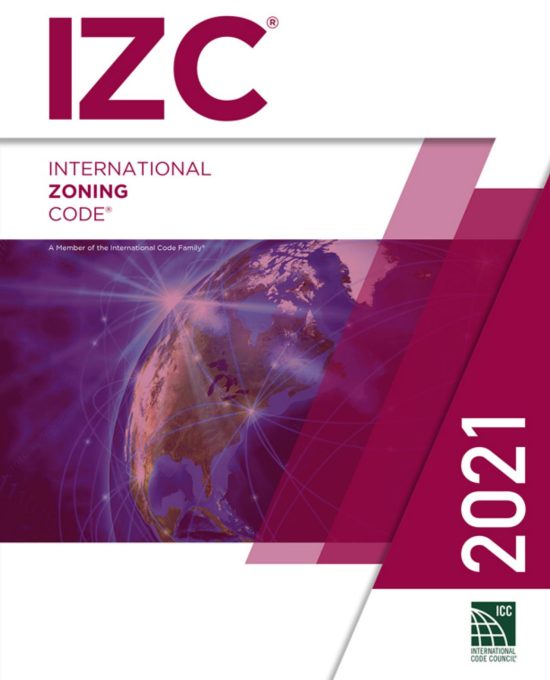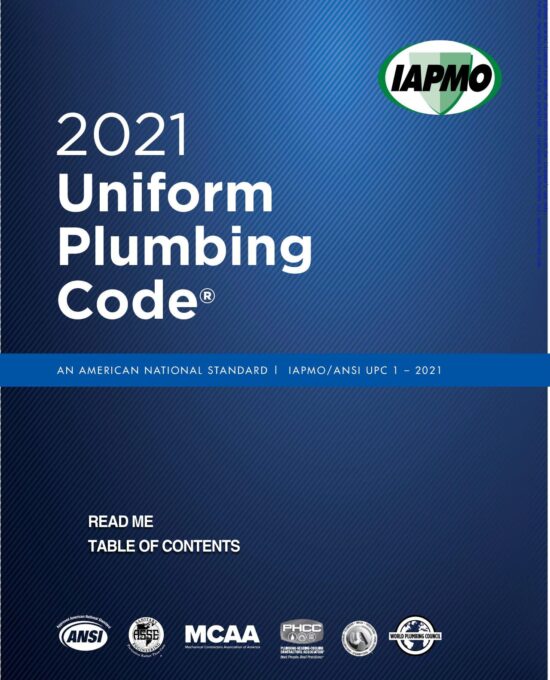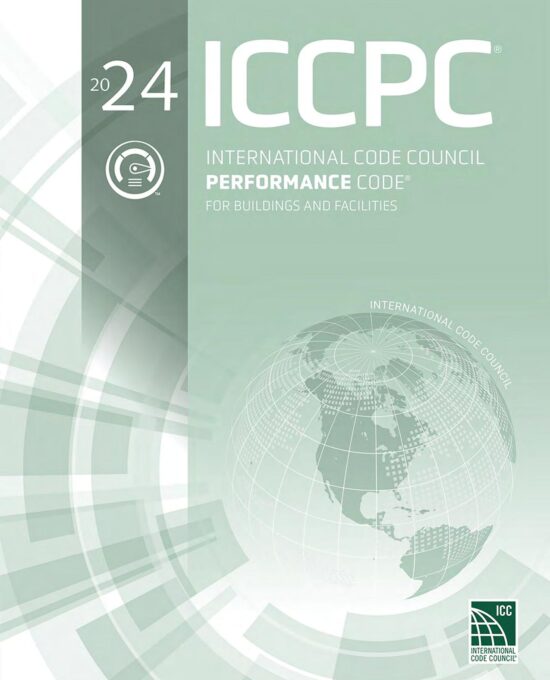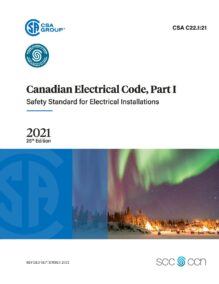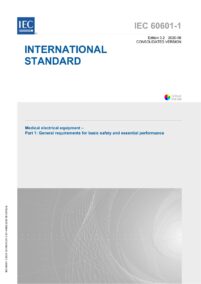2018 North Carolina State Building Code: Building Code (NCBC) – Based on 2015 IBC with North Carolina Amendments
- Adapted from the 2015 IBC with comprehensive North Carolina amendments
- Applies to all commercial and multifamily buildings statewide
- Includes detailed requirements for occupancy classification, egress, structural systems, and fire protection
- Integrates with other I-Codes for mechanical, plumbing, energy, and electrical systems
- Outlines permitting, inspection, and enforcement procedures specific to North Carolina
- Accounts for regional hazards and local code priorities
- Promotes consistent code interpretation and compliance statewide
NCBC-2018
2018 North Carolina State Building Code: Building Code (NCBC) – Based on 2015 IBC with North Carolina Amendments
- Adapted from the 2015 IBC with comprehensive North Carolina amendments
- Applies to all commercial and multifamily buildings statewide
- Includes detailed requirements for occupancy classification, egress, structural systems, and fire protection
- Integrates with other I-Codes for mechanical, plumbing, energy, and electrical systems
- Outlines permitting, inspection, and enforcement procedures specific to North Carolina
- Accounts for regional hazards and local code priorities
- Promotes consistent code interpretation and compliance statewide
NCBC-2018
2018 North Carolina State Building Code: Energy Conservation Code
- Divided into Commercial (Chapters C1–C6) and Residential (Chapters R1–R6) provisions
- Defines performance-based and prescriptive compliance paths
- Adapts 2015 IECC content with state-specific modifications and appendices
- Includes energy efficiency requirements for lighting, HVAC, insulation, fenestration, and systems commissioning
- Specifies requirements for additions, alterations, repairs, and changes of occupancy
- Incorporates dedicated appendices for residential air/duct leakage testing and high-efficiency options
- References ASHRAE, ANSI, and ICC standards applicable to North Carolina codes
- Provides worksheets, diagrams, and compliance tools for residential applications
NCECC-2018
2018 North Carolina State Building Code: Energy Conservation Code
- Divided into Commercial (Chapters C1–C6) and Residential (Chapters R1–R6) provisions
- Defines performance-based and prescriptive compliance paths
- Adapts 2015 IECC content with state-specific modifications and appendices
- Includes energy efficiency requirements for lighting, HVAC, insulation, fenestration, and systems commissioning
- Specifies requirements for additions, alterations, repairs, and changes of occupancy
- Incorporates dedicated appendices for residential air/duct leakage testing and high-efficiency options
- References ASHRAE, ANSI, and ICC standards applicable to North Carolina codes
- Provides worksheets, diagrams, and compliance tools for residential applications
NCECC-2018
2018 North Carolina State Building Code: Existing Building Code
- Integrates North Carolina amendments to the 2015 IEBC for localized enforcement
- Offers three compliance methods: Prescriptive, Work Area, and Performance-based
- Provides rules for repairs, Level 1–3 alterations, additions, historic buildings, and relocated structures
- Includes accessibility provisions and seismic retrofit guidelines
- Enables flexible design options while maintaining public safety
- Structured to align with other I-Codes for holistic code integration
- Applies to commercial, industrial, and multi-unit residential buildings undergoing rehabilitation
NCEBC-2018
2018 North Carolina State Building Code: Existing Building Code
- Integrates North Carolina amendments to the 2015 IEBC for localized enforcement
- Offers three compliance methods: Prescriptive, Work Area, and Performance-based
- Provides rules for repairs, Level 1–3 alterations, additions, historic buildings, and relocated structures
- Includes accessibility provisions and seismic retrofit guidelines
- Enables flexible design options while maintaining public safety
- Structured to align with other I-Codes for holistic code integration
- Applies to commercial, industrial, and multi-unit residential buildings undergoing rehabilitation
NCEBC-2018
2018 North Carolina State Building Code: Fire Code (NCFC)
The 2018 North Carolina State Building Code: Fire Code (NCFC) is a state-adopted adaptation of the 2015 International Fire Code®, enhanced with North Carolina-specific amendments. This code establishes minimum requirements to safeguard life, property, and public welfare from fire, explosion, and related hazards in all buildings and premises.
Designed for use by fire officials, code enforcers, architects, engineers, and contractors, the NCFC provides a comprehensive framework for fire prevention and protection systems. It ensures compliance through both prescriptive measures and performance-based design options applicable to new and existing structures.
Highlights:
- Integrates provisions from the 2015 International Fire Code® with North Carolina-specific modifications
- Addresses fire safety for construction, storage, occupancy use, and hazardous materials handling
- Regulates fire alarm systems, sprinklers, extinguishers, and egress pathways
- Enforces standards for emergency preparedness, fire command centers, and fire service access
- Includes clear rules for combustible storage, flammable finishes, and fuel dispensing systems
- Provides inspection, permitting, and enforcement protocols
- Covers special occupancies such as marinas, high-piled storage, and industrial operations
- Includes adoptable appendices on hydrant spacing, firefighter air systems, and hazardous materials
Who It’s For:
Fire marshals, building inspectors, design professionals, and public safety officials engaged in the development, renovation, or inspection of facilities in North Carolina. Ensures uniform fire code enforcement and enhances fire and life safety across the state.
NCFC-2018
2018 North Carolina State Building Code: Fire Code (NCFC)
The 2018 North Carolina State Building Code: Fire Code (NCFC) is a state-adopted adaptation of the 2015 International Fire Code®, enhanced with North Carolina-specific amendments. This code establishes minimum requirements to safeguard life, property, and public welfare from fire, explosion, and related hazards in all buildings and premises.
Designed for use by fire officials, code enforcers, architects, engineers, and contractors, the NCFC provides a comprehensive framework for fire prevention and protection systems. It ensures compliance through both prescriptive measures and performance-based design options applicable to new and existing structures.
Highlights:
- Integrates provisions from the 2015 International Fire Code® with North Carolina-specific modifications
- Addresses fire safety for construction, storage, occupancy use, and hazardous materials handling
- Regulates fire alarm systems, sprinklers, extinguishers, and egress pathways
- Enforces standards for emergency preparedness, fire command centers, and fire service access
- Includes clear rules for combustible storage, flammable finishes, and fuel dispensing systems
- Provides inspection, permitting, and enforcement protocols
- Covers special occupancies such as marinas, high-piled storage, and industrial operations
- Includes adoptable appendices on hydrant spacing, firefighter air systems, and hazardous materials
Who It’s For:
Fire marshals, building inspectors, design professionals, and public safety officials engaged in the development, renovation, or inspection of facilities in North Carolina. Ensures uniform fire code enforcement and enhances fire and life safety across the state.
NCFC-2018
2018 North Carolina State Building Code: Fuel Gas Code (NCFGC-2018)
The 2018 North Carolina State Building Code: Fuel Gas Code (NCFGC) integrates the 2015 International Fuel Gas Code® with state-specific amendments to regulate the design, installation, maintenance, and inspection of fuel gas systems. It establishes safety standards for natural and LP-gas systems across residential and commercial buildings, excluding utility infrastructure upstream of the point of delivery.
This edition ensures compatibility with the full family of I-Codes® and emphasizes both prescriptive and performance-based approaches to address gas piping, appliances, combustion air, venting, and hydrogen systems. With clear administrative provisions and detailed technical criteria, it supports safe, efficient, and code-compliant fuel gas infrastructure statewide.
Highlights:
- Applies to natural gas (≤125 psig) and LP-gas (≤20 psig) systems
- Covers piping, shutoff valves, appliances, combustion air, and venting
- Chapter-based structure includes general regulations, appliance-specific criteria, and gaseous hydrogen provisions
- Aligns with mechanical and residential codes for crossover consistency
- Appendices provide gas pipe sizing, vent system design, and safety inspection procedures
- North Carolina-specific deletions and modifications for administrative sections
- Supports engineers, inspectors, and contractors through enforceable guidance
Who It’s For:
Mechanical contractors, design professionals, inspectors, and code officials in North Carolina responsible for safe installation and maintenance of gas piping and appliance systems in compliance with state-adopted standards.
NCFGC-2018
2018 North Carolina State Building Code: Fuel Gas Code (NCFGC-2018)
The 2018 North Carolina State Building Code: Fuel Gas Code (NCFGC) integrates the 2015 International Fuel Gas Code® with state-specific amendments to regulate the design, installation, maintenance, and inspection of fuel gas systems. It establishes safety standards for natural and LP-gas systems across residential and commercial buildings, excluding utility infrastructure upstream of the point of delivery.
This edition ensures compatibility with the full family of I-Codes® and emphasizes both prescriptive and performance-based approaches to address gas piping, appliances, combustion air, venting, and hydrogen systems. With clear administrative provisions and detailed technical criteria, it supports safe, efficient, and code-compliant fuel gas infrastructure statewide.
Highlights:
- Applies to natural gas (≤125 psig) and LP-gas (≤20 psig) systems
- Covers piping, shutoff valves, appliances, combustion air, and venting
- Chapter-based structure includes general regulations, appliance-specific criteria, and gaseous hydrogen provisions
- Aligns with mechanical and residential codes for crossover consistency
- Appendices provide gas pipe sizing, vent system design, and safety inspection procedures
- North Carolina-specific deletions and modifications for administrative sections
- Supports engineers, inspectors, and contractors through enforceable guidance
Who It’s For:
Mechanical contractors, design professionals, inspectors, and code officials in North Carolina responsible for safe installation and maintenance of gas piping and appliance systems in compliance with state-adopted standards.
NCFGC-2018
2018 North Carolina State Building Code: Mechanical Code
The 2018 North Carolina State Building Code: Mechanical Code (NCMC) incorporates the 2015 International Mechanical Code (IMC) with state-specific amendments. It sets forth minimum regulations for mechanical systems to ensure public safety, health, and welfare across residential, commercial, and institutional buildings. Covering HVAC, ventilation, combustion air, exhaust systems, hydronics, and solar thermal systems, this code supports both prescriptive and performance-based design approaches.
Highlights:
- Based on the 2015 IMC, enhanced by North Carolina-specific modifications
- Defines requirements for appliance venting, duct systems, chimneys, boilers, and solar thermal systems
- Prescriptive and performance-based methods for mechanical system compliance
- Comprehensive coverage of indoor air quality, exhaust controls, and refrigeration standards
- Integrates combustion air and fuel oil systems, with references to NFPA and related codes
- Includes specialized chapters on hydronic piping, fuel oil storage, and solar systems
- Organized to align with other North Carolina codes for seamless enforcement and application
- Incorporates ICC’s latest formatting and content structure with clear section annotations
Who It’s For:
Mechanical contractors, HVAC designers, code officials, and engineers in North Carolina engaged in the design, installation, inspection, and permitting of mechanical systems per the state building code.
NCMC-2018
2018 North Carolina State Building Code: Mechanical Code
The 2018 North Carolina State Building Code: Mechanical Code (NCMC) incorporates the 2015 International Mechanical Code (IMC) with state-specific amendments. It sets forth minimum regulations for mechanical systems to ensure public safety, health, and welfare across residential, commercial, and institutional buildings. Covering HVAC, ventilation, combustion air, exhaust systems, hydronics, and solar thermal systems, this code supports both prescriptive and performance-based design approaches.
Highlights:
- Based on the 2015 IMC, enhanced by North Carolina-specific modifications
- Defines requirements for appliance venting, duct systems, chimneys, boilers, and solar thermal systems
- Prescriptive and performance-based methods for mechanical system compliance
- Comprehensive coverage of indoor air quality, exhaust controls, and refrigeration standards
- Integrates combustion air and fuel oil systems, with references to NFPA and related codes
- Includes specialized chapters on hydronic piping, fuel oil storage, and solar systems
- Organized to align with other North Carolina codes for seamless enforcement and application
- Incorporates ICC’s latest formatting and content structure with clear section annotations
Who It’s For:
Mechanical contractors, HVAC designers, code officials, and engineers in North Carolina engaged in the design, installation, inspection, and permitting of mechanical systems per the state building code.
NCMC-2018
2018 North Carolina State Building Code: Plumbing Code
The 2018 North Carolina State Building Code: Plumbing Code (NCPC) integrates the 2015 International Plumbing Code® (IPC) with North Carolina-specific amendments to ensure code-compliant design and installation of plumbing systems throughout the state. It covers all essential aspects of water supply, sanitation, and drainage to support public health and building safety.
Highlights:
- Incorporates 2015 IPC® with state-specific modifications for local relevance
- Establishes performance and prescriptive standards for plumbing systems
- Covers potable water, sanitary drainage, storm drainage, and venting systems
- Defines fixture requirements and installation guidelines for all occupancies
- Addresses healthcare plumbing, backflow prevention, and pipe sizing
- Includes Appendices C and E on structural safety and water piping system sizing
- Coordinates with related codes such as building, mechanical, and fire codes
Who It’s For:
Architects, plumbing contractors, engineers, and building inspectors who require a clear, enforceable standard for plumbing work in North Carolina's built environment.
NCPC-2018
2018 North Carolina State Building Code: Plumbing Code
The 2018 North Carolina State Building Code: Plumbing Code (NCPC) integrates the 2015 International Plumbing Code® (IPC) with North Carolina-specific amendments to ensure code-compliant design and installation of plumbing systems throughout the state. It covers all essential aspects of water supply, sanitation, and drainage to support public health and building safety.
Highlights:
- Incorporates 2015 IPC® with state-specific modifications for local relevance
- Establishes performance and prescriptive standards for plumbing systems
- Covers potable water, sanitary drainage, storm drainage, and venting systems
- Defines fixture requirements and installation guidelines for all occupancies
- Addresses healthcare plumbing, backflow prevention, and pipe sizing
- Includes Appendices C and E on structural safety and water piping system sizing
- Coordinates with related codes such as building, mechanical, and fire codes
Who It’s For:
Architects, plumbing contractors, engineers, and building inspectors who require a clear, enforceable standard for plumbing work in North Carolina's built environment.
NCPC-2018
2018 North Carolina State Building Code: Residential Code (NCRC)
The 2018 North Carolina State Building Code: Residential Code (NCRC) is the official standard for the design and construction of one- and two-family dwellings and townhouses across North Carolina. Adapted from the 2015 International Residential Code® (IRC), it incorporates state-specific amendments to ensure alignment with local building practices, safety regulations, and environmental considerations.
Highlights:
- Based on the 2015 IRC with North Carolina-specific modifications
- Applies to detached one- and two-family dwellings and townhouses not more than three stories
- Covers building, plumbing, mechanical, fuel gas, and energy provisions
- Provides requirements for foundations, framing, roofing, insulation, and fire safety
- Supports code enforcement with clearly defined compliance pathways
- Aligned with local climate zones and hazard considerations
- Enables consistency in residential permitting and inspection
Who It’s For:
Homebuilders, residential contractors, designers, code officials, and inspectors involved in residential construction in North Carolina.
NCRC-2018
2018 North Carolina State Building Code: Residential Code (NCRC)
The 2018 North Carolina State Building Code: Residential Code (NCRC) is the official standard for the design and construction of one- and two-family dwellings and townhouses across North Carolina. Adapted from the 2015 International Residential Code® (IRC), it incorporates state-specific amendments to ensure alignment with local building practices, safety regulations, and environmental considerations.
Highlights:
- Based on the 2015 IRC with North Carolina-specific modifications
- Applies to detached one- and two-family dwellings and townhouses not more than three stories
- Covers building, plumbing, mechanical, fuel gas, and energy provisions
- Provides requirements for foundations, framing, roofing, insulation, and fire safety
- Supports code enforcement with clearly defined compliance pathways
- Aligned with local climate zones and hazard considerations
- Enables consistency in residential permitting and inspection
Who It’s For:
Homebuilders, residential contractors, designers, code officials, and inspectors involved in residential construction in North Carolina.
NCRC-2018
2021 ICC Performance Code for Buildings and Facilities, ICCPC-2021
The 2021 ICC Performance Code for Buildings and Facilities (ICCPC) provides a flexible, performance-based alternative to traditional prescriptive codes. It applies to all buildings and facilities where measurable outcomes and innovative design solutions are preferred. This model code helps jurisdictions and design professionals meet safety, health, and welfare objectives using performance criteria rather than fixed prescriptions.
Highlights:
- Supports alternative compliance methods for building and fire safety through functional performance objectives
- Fully coordinated with the 2021 IBC, IFC, and other I-Codes for seamless integration
- Outlines four main parts: Administrative, Building Provisions, Fire Provisions, and Appendices
- Includes expanded requirements for design documentation such as Concept Reports, Design Reports, and O&M Manuals
- Clarifies peer review procedures and the role of special experts in evaluating performance proposals
- Enhances emergency planning with new provisions for fire protection documentation
- Introduces damage tolerance and system reliability metrics for performance-based approvals
- Emphasizes long-term inspection and maintenance to support sustained performance
- Updated appendices on risk assessment, occupant behavior, and modeling protocols
- Incorporates referenced standards from ASCE, ACI, ASTM, NFPA, and more
Who It’s For:
Jurisdictions, code officials, and design professionals seeking flexibility in code compliance through a performance-based framework.
ICCPC-2021
2021 ICC Performance Code for Buildings and Facilities, ICCPC-2021
The 2021 ICC Performance Code for Buildings and Facilities (ICCPC) provides a flexible, performance-based alternative to traditional prescriptive codes. It applies to all buildings and facilities where measurable outcomes and innovative design solutions are preferred. This model code helps jurisdictions and design professionals meet safety, health, and welfare objectives using performance criteria rather than fixed prescriptions.
Highlights:
- Supports alternative compliance methods for building and fire safety through functional performance objectives
- Fully coordinated with the 2021 IBC, IFC, and other I-Codes for seamless integration
- Outlines four main parts: Administrative, Building Provisions, Fire Provisions, and Appendices
- Includes expanded requirements for design documentation such as Concept Reports, Design Reports, and O&M Manuals
- Clarifies peer review procedures and the role of special experts in evaluating performance proposals
- Enhances emergency planning with new provisions for fire protection documentation
- Introduces damage tolerance and system reliability metrics for performance-based approvals
- Emphasizes long-term inspection and maintenance to support sustained performance
- Updated appendices on risk assessment, occupant behavior, and modeling protocols
- Incorporates referenced standards from ASCE, ACI, ASTM, NFPA, and more
Who It’s For:
Jurisdictions, code officials, and design professionals seeking flexibility in code compliance through a performance-based framework.
ICCPC-2021
2021 International Building Code – IBC-2021
The 2021 International Building Code® (IBC) provides comprehensive regulations for commercial and multifamily buildings, excluding detached one- and two-family dwellings and townhouses not more than three stories. Developed by the International Code Council (ICC), this model code supports safe, accessible, and sustainable construction through coordinated design and enforcement standards.
Highlights:
- Classifies puzzle/escape rooms as special amusement areas with new egress rules (Section 411)
- Allows separate building treatment for control areas separated by fire walls
- Requires enhanced classroom acoustics in small Group E occupancies per ICC A117.1
- Simplifies requirements for Metal Composite Materials (MCMs); removes sprinkler trade-offs
- Introduces clear guidelines for using shipping containers as buildings
- Adds sprinkler mandates for Group S-2 parking garages over 48,000 sq ft
- Adopts 2017 edition of ICC A117.1 for accessibility standards
- Mandates minimum-height parapets on aggregate-surfaced roofs for safety
- Classifies large assembly buildings (2,500+ occupants) as Risk Category III
- Aligns snow load maps and rain load rules with ASCE 7-16
- Requires special inspection of mass timber anchorage and connections
- Adds inspection requirements for fire-resistant systems in large Group R areas
- Introduces frost protection for egress doors at foundation level
- References ACI 117 and ITG 7 for concrete construction tolerances
- Establishes new mass timber construction types IV-A, IV-B, and IV-C for taller, larger structures
Who It’s For:
Architects, engineers, contractors, code officials, and commercial building developers seeking 2021 code compliance, permitting support, and design reference.
ISBN: 9781609839550
2021 International Building Code – IBC-2021
The 2021 International Building Code® (IBC) provides comprehensive regulations for commercial and multifamily buildings, excluding detached one- and two-family dwellings and townhouses not more than three stories. Developed by the International Code Council (ICC), this model code supports safe, accessible, and sustainable construction through coordinated design and enforcement standards.
Highlights:
- Classifies puzzle/escape rooms as special amusement areas with new egress rules (Section 411)
- Allows separate building treatment for control areas separated by fire walls
- Requires enhanced classroom acoustics in small Group E occupancies per ICC A117.1
- Simplifies requirements for Metal Composite Materials (MCMs); removes sprinkler trade-offs
- Introduces clear guidelines for using shipping containers as buildings
- Adds sprinkler mandates for Group S-2 parking garages over 48,000 sq ft
- Adopts 2017 edition of ICC A117.1 for accessibility standards
- Mandates minimum-height parapets on aggregate-surfaced roofs for safety
- Classifies large assembly buildings (2,500+ occupants) as Risk Category III
- Aligns snow load maps and rain load rules with ASCE 7-16
- Requires special inspection of mass timber anchorage and connections
- Adds inspection requirements for fire-resistant systems in large Group R areas
- Introduces frost protection for egress doors at foundation level
- References ACI 117 and ITG 7 for concrete construction tolerances
- Establishes new mass timber construction types IV-A, IV-B, and IV-C for taller, larger structures
Who It’s For:
Architects, engineers, contractors, code officials, and commercial building developers seeking 2021 code compliance, permitting support, and design reference.
ISBN: 9781609839550
2021 International Energy Conservation Code – IECC-2021
The 2021 International Energy Conservation Code® (IECC) sets the baseline for energy-efficient design and construction of new buildings, as well as additions and alterations to existing residential and commercial structures. It features separate residential and commercial provisions and is fully integrated with the 2021 I-Codes for coordinated compliance.
Highlights:
- Divides content into Residential (≤3 stories) and Commercial sections for targeted regulation
- Includes multiple compliance paths: prescriptive, performance-based, and Energy Rating Index (ERI)
- Updated climate zone data affects insulation and system efficiency by region
- New requirements for air barriers, insulation materials, and fenestration U-factor/SHGC
- Enhanced HVAC efficiency standards and ventilation control requirements
- Revised lighting power limits, daylighting controls, and sensor use for commercial spaces
- Strengthened water heating system insulation and controls for energy savings
- Specific provisions for renovations, historic buildings, and changes in use
- Expanded commissioning requirements and documentation protocols
- Optional appendices for solar-ready design and zero energy building frameworks
Who It’s For:
Architects, energy consultants, engineers, and code officials seeking to meet energy efficiency standards for code-compliant, sustainable buildings.
IECC-2021
2021 International Energy Conservation Code – IECC-2021
The 2021 International Energy Conservation Code® (IECC) sets the baseline for energy-efficient design and construction of new buildings, as well as additions and alterations to existing residential and commercial structures. It features separate residential and commercial provisions and is fully integrated with the 2021 I-Codes for coordinated compliance.
Highlights:
- Divides content into Residential (≤3 stories) and Commercial sections for targeted regulation
- Includes multiple compliance paths: prescriptive, performance-based, and Energy Rating Index (ERI)
- Updated climate zone data affects insulation and system efficiency by region
- New requirements for air barriers, insulation materials, and fenestration U-factor/SHGC
- Enhanced HVAC efficiency standards and ventilation control requirements
- Revised lighting power limits, daylighting controls, and sensor use for commercial spaces
- Strengthened water heating system insulation and controls for energy savings
- Specific provisions for renovations, historic buildings, and changes in use
- Expanded commissioning requirements and documentation protocols
- Optional appendices for solar-ready design and zero energy building frameworks
Who It’s For:
Architects, energy consultants, engineers, and code officials seeking to meet energy efficiency standards for code-compliant, sustainable buildings.
IECC-2021
2021 International Existing Building Code – IEBC-2021
The 2021 International Existing Building Code® (IEBC) offers a consistent, performance-based framework for repairing, altering, adding to, or changing the occupancy of existing buildings. It facilitates the reuse of older and historic structures while maintaining safety, accessibility, and code compliance without requiring full adherence to new construction standards.
Highlights:
- Limits storm shelter capacity to specific occupancies; removes travel distance requirement
- Requires IBC Chapter 14/26 compliance for major exterior wall replacements
- Mandates snow load evaluation when structural repairs involve substantial damage
- Applies enhanced classroom acoustics to educational buildings undergoing major alterations
- Permits rooftop equipment additions without full structural review under specific weight/load limits
- Requires seismic evaluation when changing occupancy from S or U to other types
- Exempts furniture like cubicles and shelving from permits and Level 2 classification
- Revises sprinkler installation thresholds for Level 2 and Level 3 alterations in high-risk areas
Who It’s For:
Contractors, architects, and code officials working on renovations, adaptive reuse, and code compliance for existing buildings—especially where full new-construction standards are impractical.
IEBC-2021
2021 International Existing Building Code – IEBC-2021
The 2021 International Existing Building Code® (IEBC) offers a consistent, performance-based framework for repairing, altering, adding to, or changing the occupancy of existing buildings. It facilitates the reuse of older and historic structures while maintaining safety, accessibility, and code compliance without requiring full adherence to new construction standards.
Highlights:
- Limits storm shelter capacity to specific occupancies; removes travel distance requirement
- Requires IBC Chapter 14/26 compliance for major exterior wall replacements
- Mandates snow load evaluation when structural repairs involve substantial damage
- Applies enhanced classroom acoustics to educational buildings undergoing major alterations
- Permits rooftop equipment additions without full structural review under specific weight/load limits
- Requires seismic evaluation when changing occupancy from S or U to other types
- Exempts furniture like cubicles and shelving from permits and Level 2 classification
- Revises sprinkler installation thresholds for Level 2 and Level 3 alterations in high-risk areas
Who It’s For:
Contractors, architects, and code officials working on renovations, adaptive reuse, and code compliance for existing buildings—especially where full new-construction standards are impractical.
IEBC-2021
2021 International Fire Code – IFC-2021
The 2021 International Fire Code® (IFC) establishes minimum fire safety standards for new and existing buildings, facilities, and operations. It covers fire prevention, life safety, hazardous materials, and responder protection, making it essential for jurisdictions managing building and fire code enforcement. Fully coordinated with the 2021 I-Codes, it supports a comprehensive regulatory framework.
Highlights:
- Adds fire safety provisions for industrial and non-industrial 3D printing (additive manufacturing)
- Regulates artificial combustible vegetation on rooftops and near buildings
- Expands emergency responder communication system requirements to newer technologies
- Clarifies sprinkler mandates for storage and sale of upholstered furniture and mattresses
- Requires sprinklers in open parking garages that exceed defined fire area thresholds
- Updates standards for installation and removal of energy storage systems (ESS)
- Introduces dedicated chapter for safe storage of distilled spirits and wines in barrels or casks
- Reinforces construction site fire safety with clear roles and planning protocols
Who It’s For:
Fire marshals, building officials, safety consultants, and facility managers responsible for fire code compliance and enforcement.
IFC-2021
2021 International Fire Code – IFC-2021
The 2021 International Fire Code® (IFC) establishes minimum fire safety standards for new and existing buildings, facilities, and operations. It covers fire prevention, life safety, hazardous materials, and responder protection, making it essential for jurisdictions managing building and fire code enforcement. Fully coordinated with the 2021 I-Codes, it supports a comprehensive regulatory framework.
Highlights:
- Adds fire safety provisions for industrial and non-industrial 3D printing (additive manufacturing)
- Regulates artificial combustible vegetation on rooftops and near buildings
- Expands emergency responder communication system requirements to newer technologies
- Clarifies sprinkler mandates for storage and sale of upholstered furniture and mattresses
- Requires sprinklers in open parking garages that exceed defined fire area thresholds
- Updates standards for installation and removal of energy storage systems (ESS)
- Introduces dedicated chapter for safe storage of distilled spirits and wines in barrels or casks
- Reinforces construction site fire safety with clear roles and planning protocols
Who It’s For:
Fire marshals, building officials, safety consultants, and facility managers responsible for fire code compliance and enforcement.
IFC-2021
2021 International Fuel Gas Code – IFGC-2021
The 2021 International Fuel Gas Code® (IFGC) provides comprehensive requirements for the design and installation of fuel gas systems in residential, commercial, and industrial buildings. It governs piping, appliances, combustion air, chimneys, vents, and gaseous hydrogen systems, ensuring safe and efficient fuel gas usage across all occupancies. Fully aligned with the 2021 I-Code suite.
Highlights:
- Regulates natural gas systems up to 125 psig and LP-gas up to 20 psig from point of delivery to appliance shutoff
- Includes complete standards for gaseous hydrogen systems in Chapter 7
- Covers installation, combustion air, and venting for a wide range of fuel gas appliances
- Supports both prescriptive and engineered design methods for air supply, venting, and pipe sizing
- Provides appendices for gas pipe and vent sizing, inspection procedures, and appeals processes
- References updated technical standards from ASME, ANSI, AGA, CSA, and NFPA
- Revised administration chapter clarifies enforcement roles, jurisdictional edits, and appeals
Who It’s For:
Mechanical engineers, gas system designers, inspectors, code officials, and utility providers responsible for safe and compliant gas system installations.
IFGC-2021
2021 International Fuel Gas Code – IFGC-2021
The 2021 International Fuel Gas Code® (IFGC) provides comprehensive requirements for the design and installation of fuel gas systems in residential, commercial, and industrial buildings. It governs piping, appliances, combustion air, chimneys, vents, and gaseous hydrogen systems, ensuring safe and efficient fuel gas usage across all occupancies. Fully aligned with the 2021 I-Code suite.
Highlights:
- Regulates natural gas systems up to 125 psig and LP-gas up to 20 psig from point of delivery to appliance shutoff
- Includes complete standards for gaseous hydrogen systems in Chapter 7
- Covers installation, combustion air, and venting for a wide range of fuel gas appliances
- Supports both prescriptive and engineered design methods for air supply, venting, and pipe sizing
- Provides appendices for gas pipe and vent sizing, inspection procedures, and appeals processes
- References updated technical standards from ASME, ANSI, AGA, CSA, and NFPA
- Revised administration chapter clarifies enforcement roles, jurisdictional edits, and appeals
Who It’s For:
Mechanical engineers, gas system designers, inspectors, code officials, and utility providers responsible for safe and compliant gas system installations.
IFGC-2021
2021 International Mechanical Code – IMC-2021
The 2021 International Mechanical Code® (IMC) establishes minimum standards for the design, installation, and maintenance of mechanical systems in residential, commercial, and industrial buildings. Covering everything from HVAC and ventilation to boilers and refrigeration, the IMC ensures safe, efficient, and code-compliant system operation. Fully coordinated with the 2021 I-Codes.
Highlights:
- Updated rules for appliance access, clearances, condensate drainage, and temperature control
- Comprehensive ventilation standards for occupied and unoccupied spaces, including hospitals and hazardous locations
- Detailed exhaust system requirements for kitchens, dryers, labs, garages, and smoke/grease control
- Regulates duct construction, dampers, insulation, filters, and fire/smoke control systems
- Refers to NFPA and IFGC standards for combustion air; includes chimney and flue guidance
- Covers installation standards for fireplaces, cooking appliances, sauna heaters, and fuel cells
- Includes safety and design rules for boilers, pressure vessels, relief valves, and tanks
- Establishes refrigeration system classification, design, piping, and testing procedures
- Provides hydronic system guidance for hot/chilled water piping, antifreeze, and insulation
- Sets safety standards for fuel oil piping, storage, and solar thermal systems
- Appendices include permit fee schedules, chimney diagrams, and appeal procedures
Who It’s For:
Mechanical contractors, engineers, inspectors, and HVAC professionals working on code-compliant building system design, installation, and maintenance.
IMC-2021
2021 International Mechanical Code – IMC-2021
The 2021 International Mechanical Code® (IMC) establishes minimum standards for the design, installation, and maintenance of mechanical systems in residential, commercial, and industrial buildings. Covering everything from HVAC and ventilation to boilers and refrigeration, the IMC ensures safe, efficient, and code-compliant system operation. Fully coordinated with the 2021 I-Codes.
Highlights:
- Updated rules for appliance access, clearances, condensate drainage, and temperature control
- Comprehensive ventilation standards for occupied and unoccupied spaces, including hospitals and hazardous locations
- Detailed exhaust system requirements for kitchens, dryers, labs, garages, and smoke/grease control
- Regulates duct construction, dampers, insulation, filters, and fire/smoke control systems
- Refers to NFPA and IFGC standards for combustion air; includes chimney and flue guidance
- Covers installation standards for fireplaces, cooking appliances, sauna heaters, and fuel cells
- Includes safety and design rules for boilers, pressure vessels, relief valves, and tanks
- Establishes refrigeration system classification, design, piping, and testing procedures
- Provides hydronic system guidance for hot/chilled water piping, antifreeze, and insulation
- Sets safety standards for fuel oil piping, storage, and solar thermal systems
- Appendices include permit fee schedules, chimney diagrams, and appeal procedures
Who It’s For:
Mechanical contractors, engineers, inspectors, and HVAC professionals working on code-compliant building system design, installation, and maintenance.
IMC-2021
2021 International Plumbing Code – IPC-2021
The 2021 International Plumbing Code® (IPC) establishes minimum standards for the design, installation, and inspection of plumbing systems in all building types—except one- and two-family dwellings and townhouses up to three stories, which are covered under the IRC. This code supports both prescriptive and performance-based approaches and promotes innovation in materials and design.
Highlights:
- Permits multiple-user all-gender toilet facilities
- Adds two approved methods for sewer relining and rehabilitation
- Allows rooftop solar panels to be installed over vent terminals
- Recognizes CSA B805/ICC 805 for rainwater harvesting system design
- Integrates accessibility provisions from ICC A117.1-2017
- Covers potable and nonpotable water, sanitary and storm drainage, venting, water heaters, and graywater systems
- Structured into prescriptive chapters with appendices and accessibility references
- Fully aligned with the 2021 I-Codes for unified plumbing regulation and enforcement
Who It’s For:
Plumbing engineers, contractors, inspectors, and code officials working on compliant, modern plumbing systems in commercial and multifamily buildings.
IPC-2021
2021 International Plumbing Code – IPC-2021
The 2021 International Plumbing Code® (IPC) establishes minimum standards for the design, installation, and inspection of plumbing systems in all building types—except one- and two-family dwellings and townhouses up to three stories, which are covered under the IRC. This code supports both prescriptive and performance-based approaches and promotes innovation in materials and design.
Highlights:
- Permits multiple-user all-gender toilet facilities
- Adds two approved methods for sewer relining and rehabilitation
- Allows rooftop solar panels to be installed over vent terminals
- Recognizes CSA B805/ICC 805 for rainwater harvesting system design
- Integrates accessibility provisions from ICC A117.1-2017
- Covers potable and nonpotable water, sanitary and storm drainage, venting, water heaters, and graywater systems
- Structured into prescriptive chapters with appendices and accessibility references
- Fully aligned with the 2021 I-Codes for unified plumbing regulation and enforcement
Who It’s For:
Plumbing engineers, contractors, inspectors, and code officials working on compliant, modern plumbing systems in commercial and multifamily buildings.
IPC-2021
2021 International Private Sewage Disposal Code – IPSDC-2021
The 2021 International Private Sewage Disposal Code® (IPSDC) establishes standards for the design, installation, and maintenance of on-site sewage systems for properties not connected to public sewer systems. It covers new systems and alterations to existing wastewater treatment infrastructure, ensuring health and environmental safety in decentralized applications.
Highlights:
- Offers a prescriptive design approach based on soil conditions, system size, and site evaluation
- Covers soil absorption systems, holding tanks, cesspools, and residential/light commercial treatment units
- Requires structured site evaluations based on percolation rates and environmental conditions
- Specifies construction and material standards for piping, tanks, system layout, and backfill
- Includes enforcement and administrative guidance for permitting, inspections, and jurisdictional customization
- Fully coordinated with the 2021 I-Codes, including IPC, IRC, and IEBC
Who It’s For:
Environmental health professionals, contractors, designers, and code officials regulating private sewage systems in non-sewered areas.
IPSDC-2021
2021 International Private Sewage Disposal Code – IPSDC-2021
The 2021 International Private Sewage Disposal Code® (IPSDC) establishes standards for the design, installation, and maintenance of on-site sewage systems for properties not connected to public sewer systems. It covers new systems and alterations to existing wastewater treatment infrastructure, ensuring health and environmental safety in decentralized applications.
Highlights:
- Offers a prescriptive design approach based on soil conditions, system size, and site evaluation
- Covers soil absorption systems, holding tanks, cesspools, and residential/light commercial treatment units
- Requires structured site evaluations based on percolation rates and environmental conditions
- Specifies construction and material standards for piping, tanks, system layout, and backfill
- Includes enforcement and administrative guidance for permitting, inspections, and jurisdictional customization
- Fully coordinated with the 2021 I-Codes, including IPC, IRC, and IEBC
Who It’s For:
Environmental health professionals, contractors, designers, and code officials regulating private sewage systems in non-sewered areas.
IPSDC-2021
2021 International Property Maintenance Code – IPMC-2021
The 2021 International Property Maintenance Code® (IPMC) sets minimum requirements for the continued use and upkeep of existing buildings and premises. It addresses structural safety, sanitation, mechanical and electrical systems, pest control, fire protection, and general property conditions. The IPMC helps ensure safe occupancy of residential and nonresidential properties through enforceable maintenance standards.
Highlights:
- Covers exterior property conditions, plumbing, HVAC, fire safety, and occupancy limits for existing buildings
- Fully aligned with the 2021 IBC, IFC, IEBC, IMC, IPC, and other I-Codes for coordinated enforcement
- Updates procedures for violations, hearings, appeals, and code enforcement actions
- References current ANSI, ASTM, NFPA, and ICC standards for technical alignment
- Includes marginal markings to highlight changes since the 2018 edition
Who It’s For:
Code officials, municipal inspectors, housing agencies, and property owners responsible for maintaining building safety, habitability, and code compliance.
IPMC-2021
2021 International Property Maintenance Code – IPMC-2021
The 2021 International Property Maintenance Code® (IPMC) sets minimum requirements for the continued use and upkeep of existing buildings and premises. It addresses structural safety, sanitation, mechanical and electrical systems, pest control, fire protection, and general property conditions. The IPMC helps ensure safe occupancy of residential and nonresidential properties through enforceable maintenance standards.
Highlights:
- Covers exterior property conditions, plumbing, HVAC, fire safety, and occupancy limits for existing buildings
- Fully aligned with the 2021 IBC, IFC, IEBC, IMC, IPC, and other I-Codes for coordinated enforcement
- Updates procedures for violations, hearings, appeals, and code enforcement actions
- References current ANSI, ASTM, NFPA, and ICC standards for technical alignment
- Includes marginal markings to highlight changes since the 2018 edition
Who It’s For:
Code officials, municipal inspectors, housing agencies, and property owners responsible for maintaining building safety, habitability, and code compliance.
IPMC-2021
2021 International Residential Code for One- and Two-Family Dwellings – IRC-2021
The 2021 International Residential Code® (IRC) sets minimum requirements for one- and two-family dwellings and townhouses up to three stories. This official ICC model code consolidates building, mechanical, plumbing, energy, fuel gas, and electrical standards into one unified guide for home construction compliance.
Highlights:
- Covers structural, mechanical, plumbing, HVAC, energy, and electrical systems
- Offers both prescriptive rules and performance-based design flexibility
- Aligns with 2021 I-Codes® for integrated, multi-discipline compliance
- Includes updated energy provisions (NFPA 70, IECC) and appendices for solar, radon, and 3D-printed construction
Who It’s For:
Builders, code officials, engineers, and inspectors involved in residential code compliance, permitting, inspection preparation, or professional reference.
IRC-2021
2021 International Residential Code for One- and Two-Family Dwellings – IRC-2021
The 2021 International Residential Code® (IRC) sets minimum requirements for one- and two-family dwellings and townhouses up to three stories. This official ICC model code consolidates building, mechanical, plumbing, energy, fuel gas, and electrical standards into one unified guide for home construction compliance.
Highlights:
- Covers structural, mechanical, plumbing, HVAC, energy, and electrical systems
- Offers both prescriptive rules and performance-based design flexibility
- Aligns with 2021 I-Codes® for integrated, multi-discipline compliance
- Includes updated energy provisions (NFPA 70, IECC) and appendices for solar, radon, and 3D-printed construction
Who It’s For:
Builders, code officials, engineers, and inspectors involved in residential code compliance, permitting, inspection preparation, or professional reference.
IRC-2021
2021 International Swimming Pool and Spa Code – ISPSC-2021
The 2021 International Swimming Pool and Spa Code® (ISPSC) provides comprehensive regulations for the safe design, construction, and maintenance of swimming pools, spas, hot tubs, and aquatic facilities. Applicable to both residential and public installations, it promotes user health and safety while ensuring alignment with the full suite of 2021 I-Codes.
Highlights:
- Regulates private and public pools, spas, exercise spas, aquatic recreation areas, and portable residential units
- Developed with the Pool and Hot Tub Alliance to integrate sanitation, safety, and emergency response best practices
- Provides standards for circulation systems, barriers, decking, diving boards, entrapment prevention, and signage
- Fully compatible with IBC, IPC, IRC, and other 2021 I-Codes for streamlined enforcement
- Supports both building departments and health agencies through coordinated review and inspection procedures
- Incorporates updates from 2015 and 2018 editions via the ICC’s open code development process
Who It’s For:
Designers, contractors, inspectors, and health officials involved in pool and spa planning, construction, or code enforcement.
ISPSC-2021
2021 International Swimming Pool and Spa Code – ISPSC-2021
The 2021 International Swimming Pool and Spa Code® (ISPSC) provides comprehensive regulations for the safe design, construction, and maintenance of swimming pools, spas, hot tubs, and aquatic facilities. Applicable to both residential and public installations, it promotes user health and safety while ensuring alignment with the full suite of 2021 I-Codes.
Highlights:
- Regulates private and public pools, spas, exercise spas, aquatic recreation areas, and portable residential units
- Developed with the Pool and Hot Tub Alliance to integrate sanitation, safety, and emergency response best practices
- Provides standards for circulation systems, barriers, decking, diving boards, entrapment prevention, and signage
- Fully compatible with IBC, IPC, IRC, and other 2021 I-Codes for streamlined enforcement
- Supports both building departments and health agencies through coordinated review and inspection procedures
- Incorporates updates from 2015 and 2018 editions via the ICC’s open code development process
Who It’s For:
Designers, contractors, inspectors, and health officials involved in pool and spa planning, construction, or code enforcement.
ISPSC-2021
2021 International Wildland-Urban Interface Code – IWUIC-2021
The 2021 International Wildland-Urban Interface Code® (IWUIC) establishes requirements for construction, land use, and vegetation management in wildfire-prone areas. Designed to reduce fire risk to buildings and communities, the code integrates prescriptive and performance-based strategies informed by real-world fire data and global mitigation research.
Highlights:
- Defines construction standards, defensible space, and vegetation management to limit wildfire spread
- Offers both prescriptive requirements and performance-based compliance options
- Regulates ignition-resistant construction, fire-resistive roofs, walls, and access infrastructure for responders
- Fully coordinated with 2021 I-Codes (IBC, IFC, IRC) for integrated hazard regulation
- Developed with input from AIA, IAFC, NASFM, and NAHB to reflect safety, design, and construction priorities
Who It’s For:
Planners, fire marshals, building officials, architects, and developers managing wildfire risk and land development in wildland-urban interface zones.
IWUIC-2021
2021 International Wildland-Urban Interface Code – IWUIC-2021
The 2021 International Wildland-Urban Interface Code® (IWUIC) establishes requirements for construction, land use, and vegetation management in wildfire-prone areas. Designed to reduce fire risk to buildings and communities, the code integrates prescriptive and performance-based strategies informed by real-world fire data and global mitigation research.
Highlights:
- Defines construction standards, defensible space, and vegetation management to limit wildfire spread
- Offers both prescriptive requirements and performance-based compliance options
- Regulates ignition-resistant construction, fire-resistive roofs, walls, and access infrastructure for responders
- Fully coordinated with 2021 I-Codes (IBC, IFC, IRC) for integrated hazard regulation
- Developed with input from AIA, IAFC, NASFM, and NAHB to reflect safety, design, and construction priorities
Who It’s For:
Planners, fire marshals, building officials, architects, and developers managing wildfire risk and land development in wildland-urban interface zones.
IWUIC-2021
2021 International Zoning Code – IZC-2021
The 2021 International Zoning Code® (IZC) provides a streamlined, enforceable model for regulating land use, building placement, and development density. Designed to simplify zoning administration in both urban and rural areas, the IZC aligns with the full suite of 2021 I-Codes to support coordinated regulatory practices.
Highlights:
- Offers a clear, structured framework for use types, setbacks, lot coverage, signage, and parking
- Fully compatible with 2021 I-Codes (e.g., IBC, IRC, IMC) for unified code enforcement
- Facilitates zoning administration through defined processes for permits, appeals, variances, and nonconforming uses
- Supports local flexibility while maintaining consistency and legal enforceability
- Developed through ICC’s consensus process with input from planners, builders, and public officials
Who It’s For:
Municipal planners, zoning administrators, code enforcement officers, and policymakers managing land use and development in communities of all sizes.
IZC-2021
2021 International Zoning Code – IZC-2021
The 2021 International Zoning Code® (IZC) provides a streamlined, enforceable model for regulating land use, building placement, and development density. Designed to simplify zoning administration in both urban and rural areas, the IZC aligns with the full suite of 2021 I-Codes to support coordinated regulatory practices.
Highlights:
- Offers a clear, structured framework for use types, setbacks, lot coverage, signage, and parking
- Fully compatible with 2021 I-Codes (e.g., IBC, IRC, IMC) for unified code enforcement
- Facilitates zoning administration through defined processes for permits, appeals, variances, and nonconforming uses
- Supports local flexibility while maintaining consistency and legal enforceability
- Developed through ICC’s consensus process with input from planners, builders, and public officials
Who It’s For:
Municipal planners, zoning administrators, code enforcement officers, and policymakers managing land use and development in communities of all sizes.
IZC-2021
2021 Uniform Plumbing Code – UPC 1-2021 (IAPMO)
The 2021 Uniform Plumbing Code® (UPC), developed by IAPMO and approved through the ANSI consensus process, establishes minimum requirements for plumbing system design, installation, and inspection. It incorporates the latest safety, efficiency, and performance provisions used across residential, commercial, and industrial projects.
Highlights:
- Adds Appendix N for defining scald risk and Legionella prevention through temperature control
- Updates backflow prevention device standards and installation methods
- Expands temperature-limiting protections for hot water outlets
- Establishes safety requirements for rooftop appliances and raised platforms
- Revises T&P valve discharge piping provisions for clarity and safety
- Introduces requirements for leak detection and monitoring technologies
- Enhances potable water pump installation and performance standards
- Adds DWV system updates for materials, cleanout access, and venting configurations
- Reorganizes medical and fuel gas system chapters for improved usability
Who It’s For:
Plumbing engineers, contractors, inspectors, and code officials enforcing compliant plumbing installations under the 2021 UPC framework.
UPC 1-2021 (IAPMO)
2021 Uniform Plumbing Code – UPC 1-2021 (IAPMO)
The 2021 Uniform Plumbing Code® (UPC), developed by IAPMO and approved through the ANSI consensus process, establishes minimum requirements for plumbing system design, installation, and inspection. It incorporates the latest safety, efficiency, and performance provisions used across residential, commercial, and industrial projects.
Highlights:
- Adds Appendix N for defining scald risk and Legionella prevention through temperature control
- Updates backflow prevention device standards and installation methods
- Expands temperature-limiting protections for hot water outlets
- Establishes safety requirements for rooftop appliances and raised platforms
- Revises T&P valve discharge piping provisions for clarity and safety
- Introduces requirements for leak detection and monitoring technologies
- Enhances potable water pump installation and performance standards
- Adds DWV system updates for materials, cleanout access, and venting configurations
- Reorganizes medical and fuel gas system chapters for improved usability
Who It’s For:
Plumbing engineers, contractors, inspectors, and code officials enforcing compliant plumbing installations under the 2021 UPC framework.
UPC 1-2021 (IAPMO)
2024 ICC Performance Code for Buildings and Facilities – ICCPC-2024
The 2024 ICC Performance Code for Buildings and Facilities (ICCPC) provides a performance-based alternative to traditional prescriptive codes, enabling innovative building designs while maintaining essential health, safety, and welfare standards. Developed by the ICC as part of the 2024 I-Code suite, this code establishes functional objectives and performance criteria for evaluating new and existing buildings across all occupancy types. It supports design flexibility by allowing solutions tailored to specific project goals, site constraints, and emerging construction technologies.
Highlights:
- Functional statements and performance requirements for structural, fire, energy, and life safety systems
- Administrative structure divided into four parts: Administration, Building Provisions, Fire Provisions, and Appendices
- Appendices include performance groups, risk factors, and design documentation guidelines
- Clarifies documentation expectations including Concept Reports, Design Reports, and O&M Manuals
- New requirements for emergency planning and responder communication systems
- Updated guidance on damage tolerance, reliability, and system performance verification
- Aligns with 2024 I-Codes including IBC, IFC, IEBC, and IECC for consistent cross-code integration
- QR-coded references for code tracking and digital plan review systems
- Encourages adoption by jurisdictions seeking flexible, enforceable alternatives to prescriptive codes
Who It’s For:
Architects, engineers, code officials, and developers using performance-based design approaches in complex, innovative, or non-traditional projects. Also suitable for jurisdictions seeking to support custom solutions while maintaining regulatory compliance.
ICCPC-2024
2024 ICC Performance Code for Buildings and Facilities – ICCPC-2024
The 2024 ICC Performance Code for Buildings and Facilities (ICCPC) provides a performance-based alternative to traditional prescriptive codes, enabling innovative building designs while maintaining essential health, safety, and welfare standards. Developed by the ICC as part of the 2024 I-Code suite, this code establishes functional objectives and performance criteria for evaluating new and existing buildings across all occupancy types. It supports design flexibility by allowing solutions tailored to specific project goals, site constraints, and emerging construction technologies.
Highlights:
- Functional statements and performance requirements for structural, fire, energy, and life safety systems
- Administrative structure divided into four parts: Administration, Building Provisions, Fire Provisions, and Appendices
- Appendices include performance groups, risk factors, and design documentation guidelines
- Clarifies documentation expectations including Concept Reports, Design Reports, and O&M Manuals
- New requirements for emergency planning and responder communication systems
- Updated guidance on damage tolerance, reliability, and system performance verification
- Aligns with 2024 I-Codes including IBC, IFC, IEBC, and IECC for consistent cross-code integration
- QR-coded references for code tracking and digital plan review systems
- Encourages adoption by jurisdictions seeking flexible, enforceable alternatives to prescriptive codes
Who It’s For:
Architects, engineers, code officials, and developers using performance-based design approaches in complex, innovative, or non-traditional projects. Also suitable for jurisdictions seeking to support custom solutions while maintaining regulatory compliance.
ICCPC-2024
